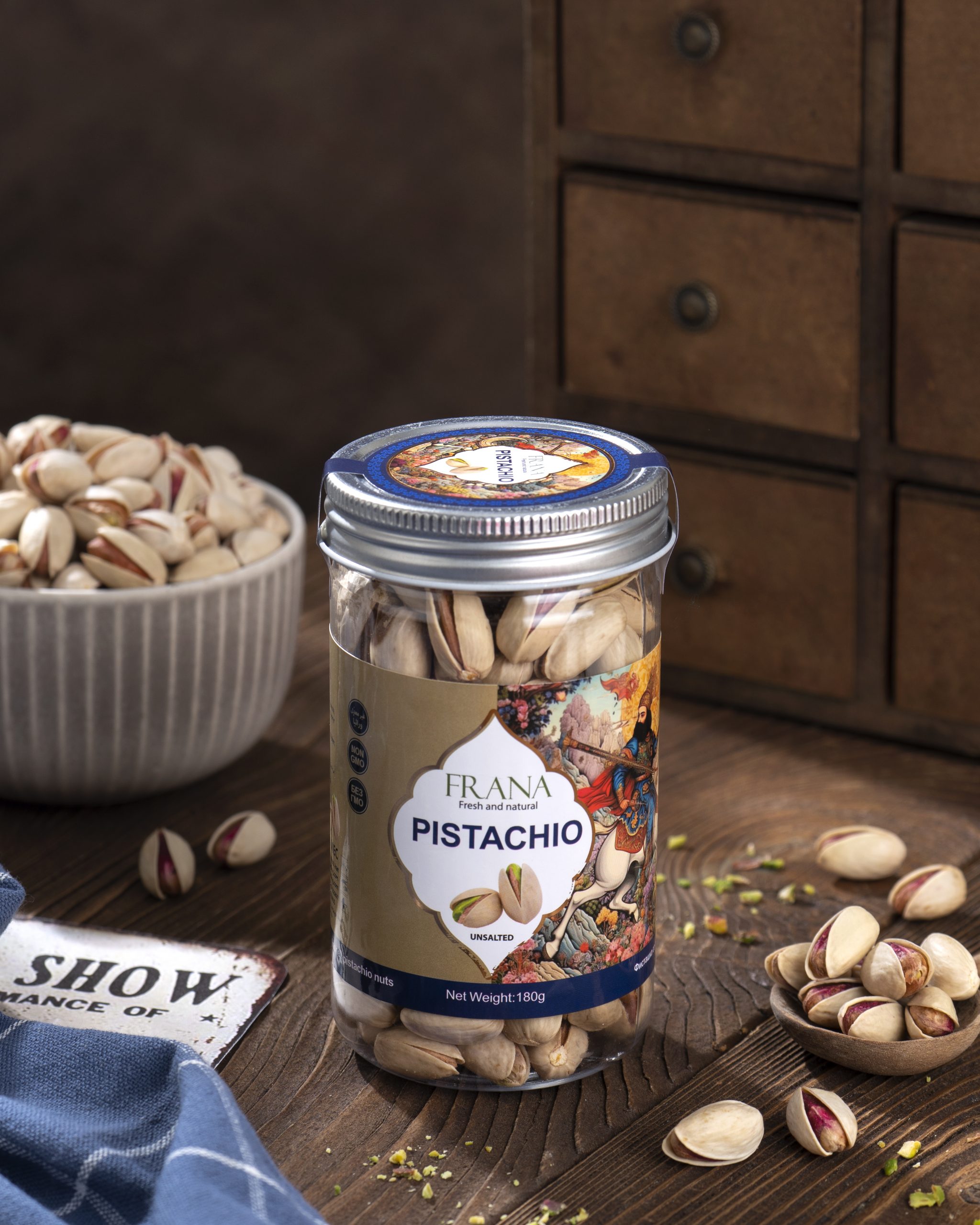
Iran is the birthplace and the world’s largest producer of pistachios. Iranian pistachio is the best and most delicious in the world. Pistachio is cultivated in gardens 800-2000 meters above sea level, causing a large difference between day and night temperature, low air pressure and relative humidity, and better concentration and movement of pistachio essence. Iranians can properly use these conditions to produce the world’s most delicious pistachios. Iranian pistachios are distinguished from those grown elsewhere by their chunky size, high fat content, and light green color, among other factors. MEC selects the best pistachios from the heart of Iran’s nature and offers a wide variety of raw to roasted and flavored pistachios, all containing minimal aflatoxin in compliance with European standards. Types of Iranian pistachio include:
Fandoghi (Round): This round pistachio has a high smiling percentage with a purple nut and bone cream shell. It is offered in the following sizes: 26-29, 28-30, 30, 32.
Kaleh Ghochi (Jumbo):
This pistachio is round and chunky with moderate smiling percentage and gray red nut and bone white shell. This cultivar is known for its large size and high price.
Akbari: This pistachio is almond-shaped with a high smiling percentage. Due to its pleasant appearance, it is known as a luxury pistachio with a purple-brown nut and dark bone shell.
Ahmad Aghaei:
This long pistachio is considered one of Iran’s and the world’s best and tastiest pistachios due to containing plenty of good fat. The white shell and red nut make this pistachio one of the most sought-after.
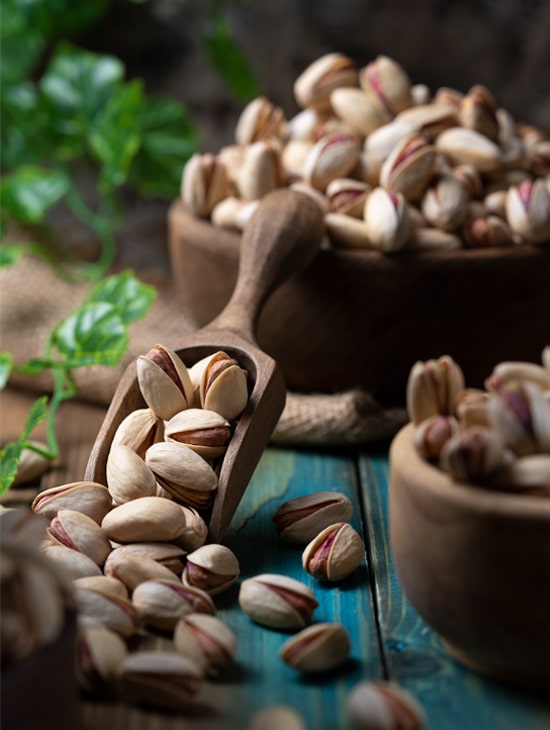
Iran is the birthplace and the world’s largest producer of pistachios. Iranian pistachio is the best and most delicious in the world. Pistachio is cultivated in gardens 800-2000 meters above sea level, causing a large difference between day and night temperature, low air pressure and relative humidity, and better concentration and movement of pistachio essence. Iranians can properly use these conditions to produce the world’s most delicious pistachios. Iranian pistachios are distinguished from those grown elsewhere by their chunky size, high fat content, and light green color, among other factors. MEC selects the best pistachios from the heart of Iran’s nature and offers a wide variety of raw to roasted and flavored pistachios, all containing minimal aflatoxin in compliance with European standards. Types of Iranian pistachio include:
Fandoghi (Round): This round pistachio has a high smiling percentage with a purple nut and bone cream shell. It is offered in the following sizes: 26-29, 28-30, 30, 32.
Kaleh Ghochi (Jumbo):
This pistachio is round and chunky with moderate smiling percentage and gray red nut and bone white shell. This cultivar is known for its large size and high price.
Akbari: This pistachio is almond-shaped with a high smiling percentage. Due to its pleasant appearance, it is known as a luxury pistachio with a purple-brown nut and dark bone shell.
Ahmad Aghaei:
This long pistachio is considered one of Iran’s and the world’s best and tastiest pistachios due to containing plenty of good fat. The white shell and red nut make this pistachio one of the most sought-after.
Nicknamed red gold for its incredible value, Iranian and Afghan saffron are among the world’s most precious and extraordinary spices with many uses in the food and pharmaceutical industries. This valuable plant, native to Asia, has long been a symbol of happiness and blessing and won the world over with its pleasant color, aroma, and taste. By giving cheer, softness, and beauty to the skin and face and other magical properties, it aims to capture the hearts of peoples and nations around the world.
Although many countries are nowadays growing and selling saffron, Iranian saffron remains the best due to the country’s favorable climate and weather conditions and other saffron cultivation factors. Compared to tropical regions, saffron onion grows better in cold regions with high precipitation. This is a major factor distinguishing high-quality Iranian saffron from those produced elsewhere around the world.
MEC aims to offer high-quality saffron in bulk packaging at an affordable price.

Nicknamed red gold for its incredible value, Iranian and Afghan saffron are among the world’s most precious and extraordinary spices with many uses in the food and pharmaceutical industries. This valuable plant, native to Asia, has long been a symbol of happiness and blessing and won the world over with its pleasant color, aroma, and taste. By giving cheer, softness, and beauty to the skin and face and other magical properties, it aims to capture the hearts of peoples and nations around the world.
Although many countries are nowadays growing and selling saffron, Iranian saffron remains the best due to the country’s favorable climate and weather conditions and other saffron cultivation factors. Compared to tropical regions, saffron onion grows better in cold regions with high precipitation. This is a major factor distinguishing high-quality Iranian saffron from those produced elsewhere around the world.
MEC aims to offer high-quality saffron in bulk packaging at an affordable price.
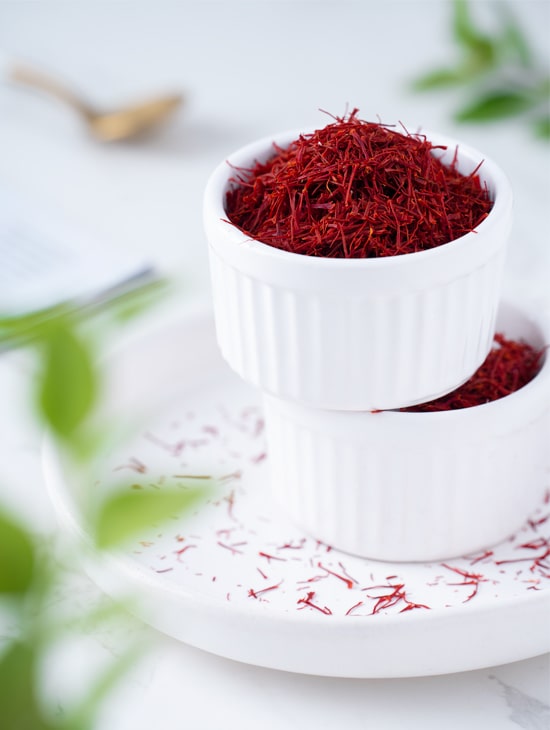
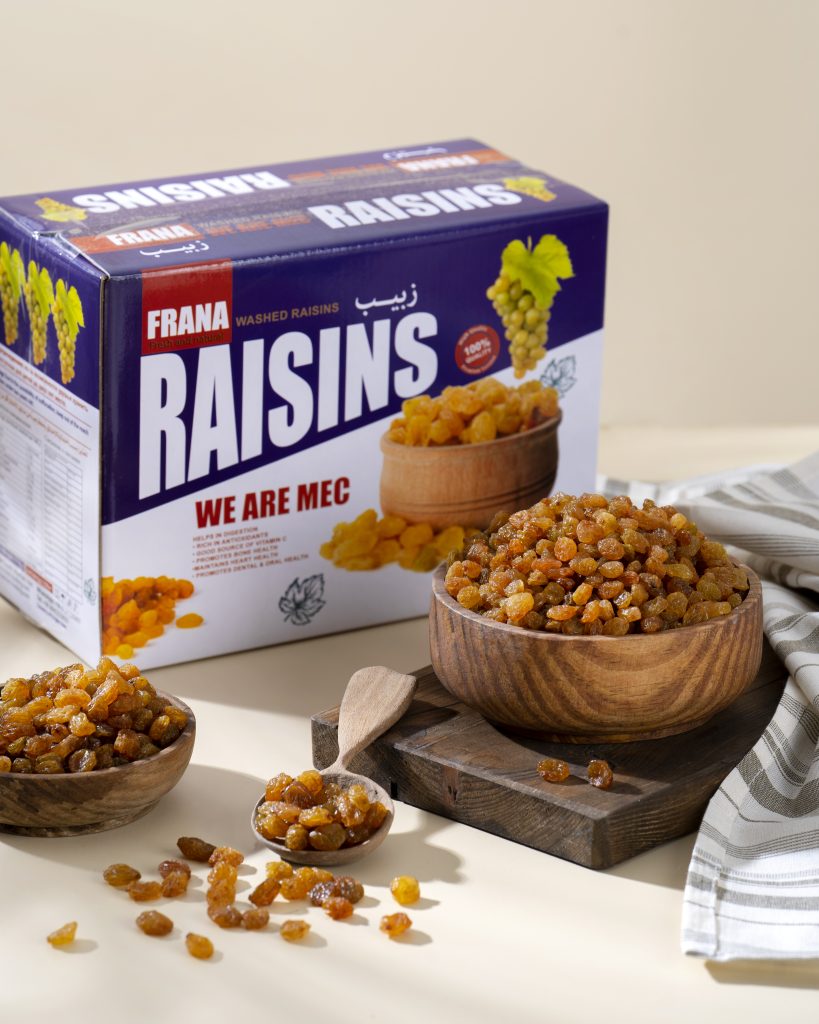
People eat raisins, dried fruits of the grape vine (Vitis vinefera), which is a member of the Vitaceae family, due to its distinct flavor. After reaching the desired sugar content, grapes are harvested, washed, dried, sorted, and packaged.
Types of Raisins:
1.Sun-Dried Raisins:
In sun-drying, raisins are dried in the sun without any chemicals. This method takes 15-20 days to produce raisins depending on weather conditions. Then, the raisins are transferred to the factory for washing and packaging. This method produces dark brown and somewhat dry raisins.
2. Shadow-Dried Raisins:
In this method, grape bunches are tied to 2-3 m long strings and vertically hung up in the shade under well-ventilated indoor conditions. This method takes 10-20 days and produces green raisins.
3.Sultana Raisins:
In this method, the grapes are harvested in bunches and put inside baskets. The baskets are placed in a solution consisting of a mixture of edible potassium carbonate, water, and vegetable oil. After one minute, they are removed from the solution and placed on a screen for the excess solution to be drained off. The grape bunches are then put in the sun for 2-3 days to dry.
4.Golden Raisins
Golden raisins, which are only produced in Iran, are always in demand. In this production method, the grapes are fumigated with sulfur dioxide for several hours, which gives them a golden yellow color. They are then put in the shade with sufficient ventilation to dry. These raisins have a good flavor and soft texture. In addition, their skin becomes thinner and more delicate and its color turns into amber gold. The raisins will have a sweet flavor and aroma.
Medicinal herbs have been widely used for medical and healing purposes for as long as 60,000 years. Medicinal herbs are plants containing active ingredients that make them effective as a full remedy on their own or as part of the treatment process—as supplements in the form of extract, oil, et cetera.
The Middle East has, since antiquity, been a major hub for the production of medicinal herbs. The natives of the land have long been attracted to traditional medicine, a prominent example of this is the renowned polymath Avicenna. The science of medicinal herbs became standard practice once it was made accessible to other Western and Asian countries.
Furthermore, recent considerable developments in the cultivation of medicinal plants have greatly advanced the pharmaceutical industry, and thus, with the help of man`s greatest treasure, nature, modern medicine has been able to treat many diseases previously thought incurable
The general public has, in recent years, turned more and more to medicinal herbs, in part because of the countless side effects that often accompany chemical drugs, and also because of the plant’s effectiveness, cheaper price, and of course, biodegradable properties. So much so that currently an increasing 10% of the world`s medicinal remedies are medicinal plants and herbal medicine.
Keep in mind that arbitrary use of medicinal herbs is not recommended; any prescription or consumption of such medications should be approved by an expert in the field. For optimum results, it is recommended that these herbs be incorporated into one`s daily life and lifestyle.
In conclusion, by adding these healing plants and medicinal herbs to your diet, you put your and your family`s health, fitness, and esprit above everything else.
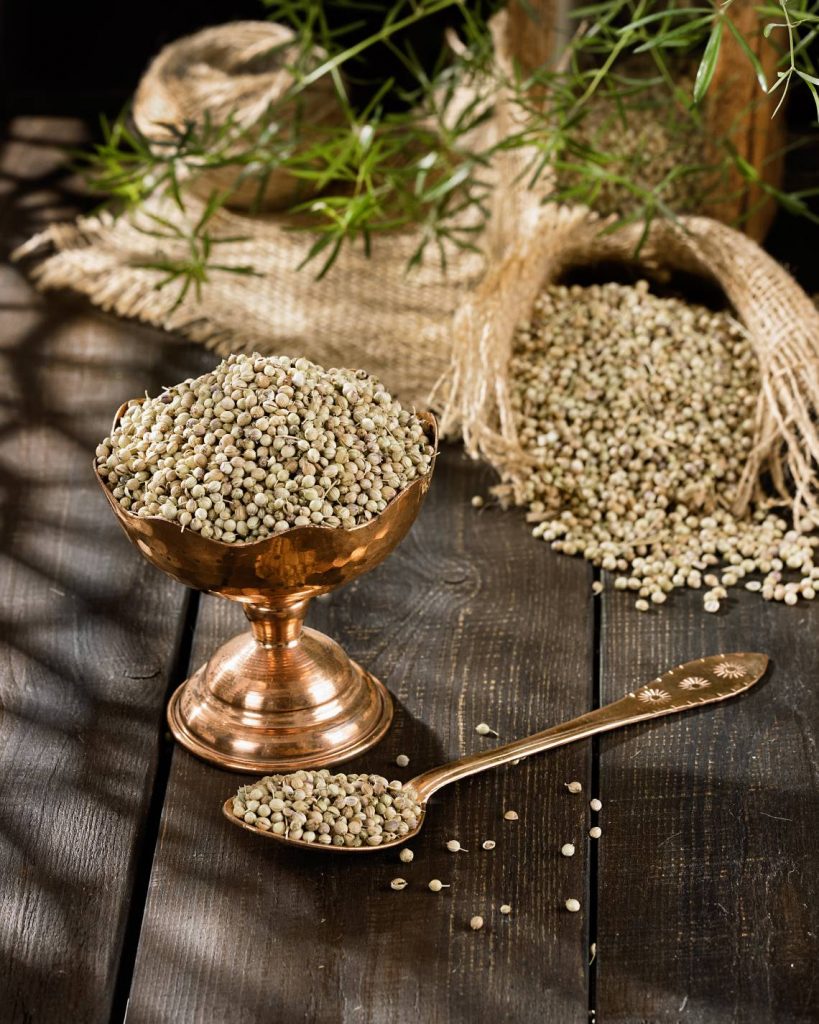
Medicinal herbs have been widely used for medical and healing purposes for as long as 60,000 years. Medicinal herbs are plants containing active ingredients that make them effective as a full remedy on their own or as part of the treatment process—as supplements in the form of extract, oil, et cetera.
The Middle East has, since antiquity, been a major hub for the production of medicinal herbs. The natives of the land have long been attracted to traditional medicine, a prominent example of this is the renowned polymath Avicenna. The science of medicinal herbs became standard practice once it was made accessible to other Western and Asian countries.
Furthermore, recent considerable developments in the cultivation of medicinal plants have greatly advanced the pharmaceutical industry, and thus, with the help of man`s greatest treasure, nature, modern medicine has been able to treat many diseases previously thought incurable
The general public has, in recent years, turned more and more to medicinal herbs, in part because of the countless side effects that often accompany chemical drugs, and also because of the plant’s effectiveness, cheaper price, and of course, biodegradable properties. So much so that currently an increasing 10% of the world`s medicinal remedies are medicinal plants and herbal medicine.
Keep in mind that arbitrary use of medicinal herbs is not recommended; any prescription or consumption of such medications should be approved by an expert in the field. For optimum results, it is recommended that these herbs be incorporated into one`s daily life and lifestyle.
In conclusion, by adding these healing plants and medicinal herbs to your diet, you put your and your family`s health, fitness, and esprit above everything else.
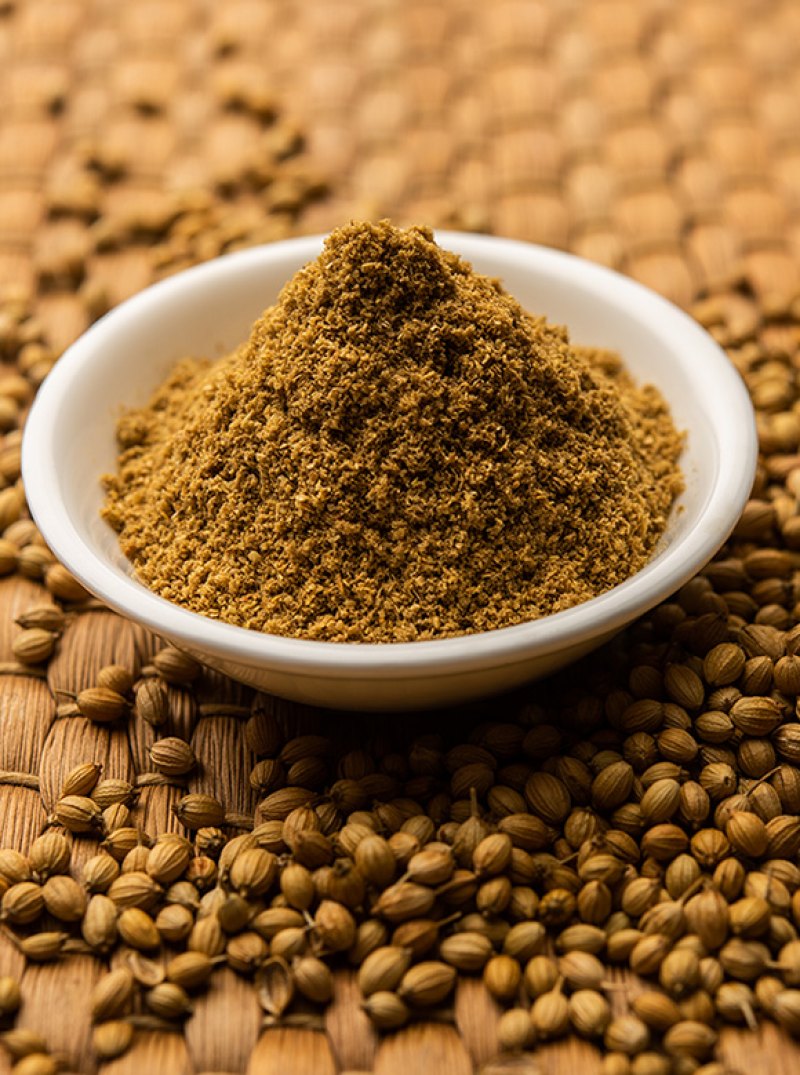
The Faces Behind our Success